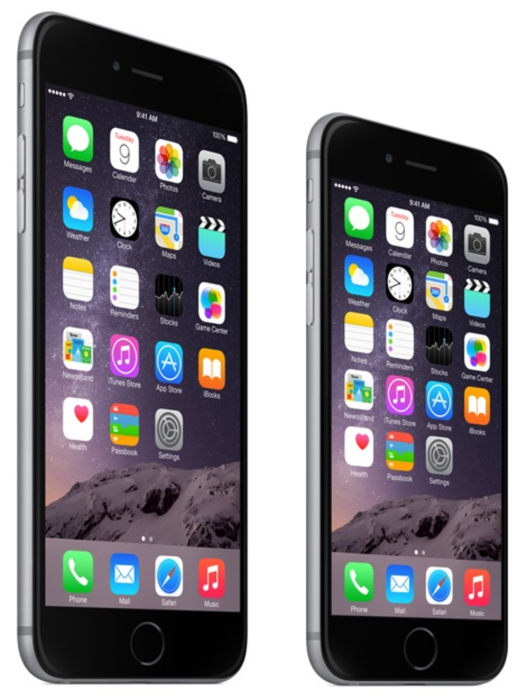It’s official. As of last Tuesday’s big Apple reveal of the iPhone 6, iPhone 6 Plus, and the new Apple Watch, I became obsolete as the now archaic owner of an iPhone 5S.
Pre-orders of Apple’s latest, sleek gadgets, were available at midnight Friday; they’ll hit stores on September 19. Personally, I have no intention of dropping a minimum of $649, without a two-year contract (and more than double that price if amortized over two years) on another phone from Apple. But millions of mobile phone users have contracts that have or will soon expire, and many of them have set their sights on a shiny, new iPhone. (Even my Android-touting mom is planning to get a new iPhone in about a week.)
That provides a huge opportunity for mobile marketers.
The new iPhones are more powerful, dramatically thinner, offer higher resolution, and perhaps most important to marketers, are larger in screen size. The iPhone 6 and iPhone 6 Plus have a 4.7-inch and 5.5-inch display, respectively. Compare that to my current 4-inch display on the iPhone 5S.
So what does that mean for mobile marketers?
It might seem like a simple tweak in screen size and pixels, but Apple is finally answering users’ incessant demands for bigger, clearer screens. Today, a growing number of mobile phone users want larger screens to browse the Web, watch videos, and play games. In other words, they want engaging content—and lots of it. That’s where wily mobile marketers come in; they can meet those demands for rich-media content with digital campaigns that optimize sight, sound, and movement.
And consumers’ torrid love affair with mobile gadgets and content only continues to heat up. Although Android smartphone shipments outperform iOS 82% to 18% (that’s according to a June 2014 report from video technology company Ooyala), Apple devices still grabbed the lion’s share of video plays in the first quarter—about 64%. Here in North America, iOS video plays outdid Android 60% to 40%. And that same study reports that mobile video consumption continues to skyrocket—an increase of 133% from 2013 to 2014, and a whopping 532% since 2012. Simply put: users want more video and mobile content.
OK, how will that change marketing campaigns?
The iPhone 6, iPhone 6 Plus, and even the Apple Watch potentially enable marketers to supercharge their campaigns, and perhaps, boost mobile purchases. All of the new gadgets are equipped with the company’s new payment service, Apple Pay. Enabled by a secure chip and a near-field communications (NFC) antenna, each person’s phone—or watch—will now be a point-of-sale. That means marketers need to focus on crafting campaigns that make it both enticing and easy for shoppers to buy in the moment. Marketers are now up against the clock—or should I say Apple Watch; campaigns will need to be even more focused on consumers’ present needs and desires, and less about moving a potential customer through the funnel over time.
Where do marketers go from here?
You get to have fun; think of yourself as the buyer and determine what would get you to watch, interact with, or act on a mobile campaign. Enhance what you’ve done in the past with a bigger canvas and faster, more modern tools. And as an editor, I’m looking forward to tracking the deluge of campaigns sure to come over the next few months. Maybe, I’ll even buckle and get a new iPhone. Maybe.
Images:apple.com








